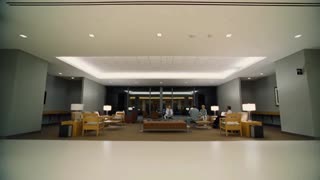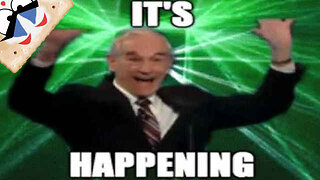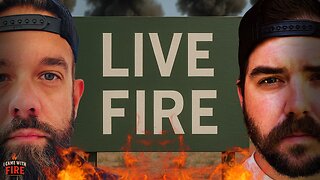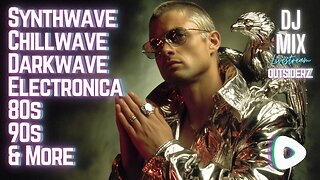Premium Only Content

Star Spangled Banner Somewhere If 6 Was 9 Jimi Hendrix
Star Spangled Banner Album: Woodstock: Music from the Original Soundtrack and More (1970)
Somewhere Album: People, Hell & Angels (2012)
If 6 Was 9 Album: Axis: Bold As Love (1967)
by Jimi Hendrix
Few performances in the history of rock ‘n’ roll are more iconic than when Jimi Hendrix cemented his legendary status and delivered the show of his career on the biggest stage of them all, a moment when the mercurial artist headlined the Woodstock Festival in 1969.
The whole weekend was a watershed moment for music, but one specific part was the most poignant of all. As the subversive edge of America’s youth descended upon a small town, with fear of crime and panic sweeping the outer limits, Hendrix paid tribute to his country.
One of the most enigmatic performances of the weekend came when Hendrix rolled out an unexpected, distorted rendition of the US national anthem. The performance was considered as an offensive moment and it sent a ripple through America and when he appeared on the Dick Cavett show some months after his headline show — he had to answer why he made this statement on such a grand stage.
Hendrix cunningly decided to use the music’s own bombastic nature to project the violence carried out under his nation’s flag. He managed to do this by holding a keynote longer than he usually would and also applied a little more pressure to his Stratocaster’s tremolo bar which then created an unsettling effect. With a guitar in his hands, he was more effective than his words could ever be. He then stopped playing the song in its original form and just turned the lyrics about bombs bursting in air and rockets lighting up the night into music.
This was Hendrix’s way of kicking back at the idea of military power being the only thing that is great about America and, through the use of just his instrument, he managed to evoke the opposite feeling of what the anthem was intended to cause and is one of the great political statements in the music history.
“I don’t know, man,” Hendrix said on his decision to play the track before adding, “I’m an American, so I played it. They made me sing it in school, so it was a flashback.” Cavett then points out that Hendrix is likely to find himself on the receiving end of a barrage of hate mail because of his decision to cover the national anthem in an unorthodox manner, to which Hendrix proudly stated, “It’s not unorthodox, I thought it was beautiful.”
Cavett would later reflect on the interview years later and said that he should have supported Hendrix’s version rather than opening him up for criticism: “I suppose I could have added that since we somehow acquired the most dismal, virtually unsingable dirge of a national anthem of any known nation, we should decorate Hendrix for turning it into music.”
Recorded in March 1968, "Somewhere" finds Hendrix supported by Buddy Miles on drums and Stephen Stills on bass. Engineer and producer Eddie Kramer told Rolling Stone, "[it's] a fantastic example of Jimi's amazing control of the wah-wah [pedal] the tone of the wah-wah – how that affects the whole song."
Somewhere was released as the first single from Jimi Hendrix's posthumous album, People, Hell & Angels. The record contains 12 previously unreleased tracks showcasing, the guitar legend's experimental work outside the then current Jimi Hendrix Experience.
This is not the first time Somewhere has appeared on disk. A different version was previously included on the 4-disc box set titled The Jimi Hendrix Experience, which was released in 2000.
Co-producer John McDermott commented to Digital Spy that he was surprised Somewhere wasn't considered for Electric Ladyland. He added: "I don't know whether that was because Jimi recorded it without Chas Chandler being there to supervise it - that could have been an issue. Like 'My Friend,' it's a really interesting look at Jimi when he was just starting to step outside the original three-man band."
Stephen Stills was good friends with both Jimi and Buddy Miles. McDermott told Digital Spy: "I think this track [Somewhere] was really about Jimi taking advantage of the skills his friends had and tapping into that. Today, it's nothing to invite your friends to the studio and have them play on a track - people do it all the time, guest starring on cuts and all that. Back then, it didn't happen so much. The Beatles, The Stones - with rare exceptions, they always kept the core."
Somewhere was one of seven tracks from People, Hell, & Angels, which featured on the episode of the CBS cop drama Hawaii Five-0 that aired on January 20, 2013.
People, Hell and Angels debuted at # 2 on the Billboard 200, marking Hendrix' highest-charting album since Electric Ladyland spent two weeks at #1 in 1968.
Closing out Side One of the Jimi Hendrix Experience's sophomore album, Axis: Bold As Love, If 6 Was 9's counterculture anthem finds Hendrix waving his metaphorical freak flag as a symbol of his individuality. He's not interested in joining the ranks of long-haired hippies ("I ain't gonna copy you") or white-collared conservatives ("They're hoping soon my kind'll drop and die") - he just wants to live his life on his own terms.
After Hendrix introduced the phrase "freak flag" in this tune, it quickly became part of the late '60s lexicon. For hippies, their refusal to cut their hair was an act of rebellion against outdated social norms perpetuated by their conservative parents, so their flowing manes became their freak flags.
In Crosby, Stills, Nash & Young's 1970 tune "Almost Cut My Hair," David Crosby opted to keep his long locks so he wouldn't betray the cause. He sang:
I feel like letting my freak flag fly
And I feel like I owe it, to someone, yeah
If 6 Was 9 was recorded in two parts, titled "Section A" and "Section B," and edited together to create a single track. The next day, Hendrix and drummer Mitch Mitchell revisited the second half, now dubbed "Symphony Of Experience," and improved the rhythm track with new drum and guitar parts.
The book Ultimate Hendrix by John McDermott includes the guitarist's recollection of the recording session, including the foot stomping percussive effect created with the help of some famous guests. "I adore 'If 6 Was 9,'" Hendrix said. "That was a complete jam session, then we put the words on afterwards. That's me on the flute. Gary Leeds (also known as Gary Walker of The Walker Brothers) and Graham Nash did some foot stomping, and that's (Chas) Chandler's big feet on the fade-out. 'If 6 Was 9' is what you call a great feeling of blues."
The flute Hendrix is talking about is a beat-up recorder he bought from a London street vendor and added to If 6 Was 9.
Hendrix lost the original mixes for the first half of the album when he took the masters with him to a party and left them in a taxi. The next day, all of Side One had to be remixed within 11 hours. Thankfully, bassist Noel Redding had a tape of the rough mix of this tune, but it was falling apart.
"Before we put it on the machine, I had to iron out the wrinkles," engineer Eddie Kramer recalled in Ultimate Hendrix. "It was recorded at 7 ½ i.p.s. (inches per second) and the tape was just a nightmare. That tape, though, was transferred to 15 i.p.s. and that's the version that you hear."
Although they were able to salvage it, Kramer lamented that they were never able to recapture the quality of the original.
Axis: Bold As Love was released in 1967, the same year the band issued their debut, Are You Experienced. Both albums were produced by Chas Chandler, who was the original bassist for The Animals. He was on tour with that band when he saw Hendrix perform at a Greenwich Village nightclub in 1966. Impressed by his talent, Chandler convinced him to come to London, where they put together the rest of Hendrix's band.
If 6 Was 9 was used in the movies Easy Rider (1969) and Point Break (1991). It was also featured on the TV series Mad Men in the 2014 episode "Field Trip."
-
 11:51
11:51
Psychological operations
7 days agoBrick One Angry Dwarf And 200 Solemn Faces Army Ben Folds Five
19 -
 29:54
29:54
Afshin Rattansi's Going Underground
20 hours agoUkraine: Prof. Anatol Lieven SLAMS Europe’s ‘BLOODY STUPIDITY’ as Trump Negotiates with Putin
20K6 -
 15:27
15:27
robbijan
1 day ago $2.40 earnedThe Emperor’s New Labubu & The Spiritual War Behind Everything
42.9K43 -
 LIVE
LIVE
GritsGG
17 hours ago36 Hour Stream! Most Wins 3420+ 🧠
669 watching -
 2:05:47
2:05:47
TimcastIRL
6 hours agoTrump FBI Raids John Bolton Amid Classified Docs Investigation | Timcast IRL
174K70 -
 2:15:23
2:15:23
TheSaltyCracker
6 hours agoFinally Someone Gets Raided ReEEeStream 8-22-25
81K209 -
 2:59:21
2:59:21
I_Came_With_Fire_Podcast
18 hours agoChina's New Ship Killers, EU Dead, Shooter HOAX, and The Missing Woman
16.1K2 -
 3:46:26
3:46:26
SynthTrax & DJ Cheezus Livestreams
15 hours agoFriday Night Synthwave 80s 90s Electronica and more DJ MIX Livestream OUTSIDERZ Edition
23.7K -
 3:39:16
3:39:16
VapinGamers
5 hours ago $0.07 earnedFortnite Friday with BrianZGame and Community! #1 Controller Scrub NA - !rumbot !music
9.83K -
 5:00:14
5:00:14
iCheapshot
6 hours ago $0.02 earnedTrying Out The Finals | Complete Newb
6.77K3